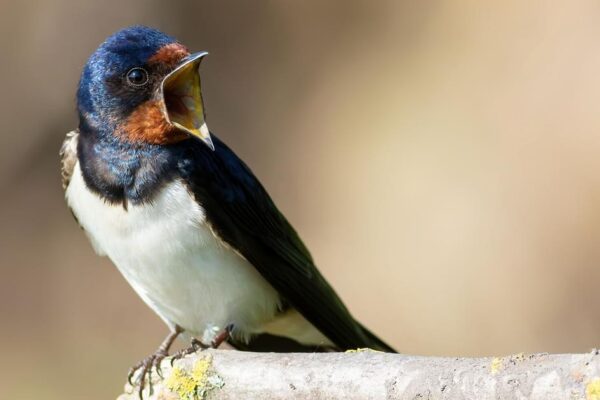Remarkably successful birds, and pigeons nest anywhere from the balcony of an apartment complex to the canopy of a tropical jungle. Due in part to its natural breeding technique, the feral Pigeon (Columba livia domestica) has become one of the most common urban bird species worldwide.
Even though they only produce a single or double clutch of eggs, pigeons are prolific breeders. Their capacity to nest year-round rather than waiting for a particular season and the exceptional care they get from both parents are the key factors in their success.
Not only is it intriguing to learn about pigeon breeding behaviour, but it also gives us the ability to manage (or prevent) these birds from nesting, which might help struggling natural species or keep invasive pigeons out of places where they shouldn’t be.
There’s still a lot to discover about pigeon nesting. Join us as we examine one of the most common birds in the world’s breeding strategy!
Pigeons establish couples at any time of year and build solid, enduring connections.
When Do Pigeons Nest and Why?
When pigeons are around six months old, they may begin to reproduce. Pairs may form at any time of year and they create strong, enduring ties. Among birds, they are unique in that they may reproduce any month of the year, provided that the weather and the food supply permit it.
Their mating season, which usually occurs in the spring and summer, may have distinct peaks depending on the local climate. When the birds moult in the autumn and autumn, especially in colder climates throughout the winter, nesting often declines.
Choosing a Nesting Site
The several kinds of pigeons have distinct nesting sites, such as the ground, cliffs, ledges, and trees and other plants. The perfect spot is protected from the weather, out of the way of ground predators, and close to productive foraging areas with a consistent supply of food. The male pigeon is in charge of locating the location and will make calls from the location he has selected to entice his partner.
The feral offspring of the wild Rock Dove prefer buildings constructed by humans, whereas the former usually nests on level ledges on mountains and coastal cliffs. A wide range of covered man-made ledges, such as windowsills, bridges, barns, and signboards, are used by feral pigeons.
A wide range of covered man-made ledges are used by feral pigeons, including signboards, bridges, barns, balconies, and window sills.
Nest Construction Supplies and Methods
Although pigeons aren’t exactly known for their ability to construct nests, they must be doing something right since several species in their family have had remarkable success!
Since they re-use the location without clearing away their waste, pigeons construct a basic platform nest that has the potential to become rather big over time. While twigs are often preferred, they employ a variety of materials to construct their nests. Grass, feathers, leaves, and other plant stuff are other typical components.
Males and females have separate roles in nest formation, yet they both participate. Using materials that the male brings in, the female remains at the nest location and completes the actual construction. While the female bird remains still and constructs the nest around her body, the male makes many visits, gathering one twig at a time.
Pigeon Eggs: Dimensions, Form, and Incubation
While a normal clutch of two eggs is laid, feral pigeons have the capacity to produce up to three. Approximately eight days after mating, the first egg is deposited, followed by the second two days later. Although they vary in size, their pure white eggs typically measure 39 millimetres in length and 29 millimetres in width.
To ensure that the eggs are adequately shielded from harsh weather, both parents share incubation responsibilities. The male spends most of the day sitting on the eggs, while the female typically incubates from late afternoon until the next morning. In general, feral pigeon eggs hatch in around eighteen days.
Although a normal clutch of two eggs is laid, feral pigeons have the capacity to produce up to three.
Taking Care of Baby Pigeons
Newly hatched pigeon chicks are blind and defenceless, depending entirely on their loving parents for food and warmth. At hatching, they weigh just 15 grammes, but by the end of the first week, some breeds have tripled or even quadrupled their hatching weight. While they grow more slowly in the winter, sometimes taking more than six weeks, Pigeon squabs may leave the nest in less than four weeks during the warmer months.
Advantages of Egg-Based Milk
Pigeon or crop milk is a nutrient-dense, high-protein, high-fat fluid that adults give to their young. One of the main explanations for pigeons’ ability to nest throughout the year is this material, which is generated by both parents. To ensure that their young get enough protein, pigeons may feed their squabs a vegetarian diet exclusively, rather than depending on seasonal food sources like insects.
Consuming
At first, pigeon squabs are fed only on pigeon milk and need many meals each day. About the time they eat their first solid meal, on day four or five, their eyes open. When they are weaned onto a fully solid diet in their second week, feeding reduces to two meals each day.
At four to six weeks of age, the young birds are completely fledged and prepared to take flight. When chicks leave the nest, they could weigh a lot more than they would as adults, yet during the first few weeks of going it alone, they shed weight quickly.
At first, pigeon squabs are only given pigeon milk, and they need many meals a day.
Difficulties and Dangers for Pigeon Nesting
For adult pigeons, their eggs, and their babies, nesting is a risky period. For adults, successful breeding requires a lot of energy. It takes time and energy to build a nest, incubate, and care for young, which may make adult birds more susceptible to disease and predators.
Predators such as raptors, owls, corvids, and mammals like opossums, rats, and raccoons pose a special threat to pigeon eggs and young. Because their young might die from exposure to rain or high winds during the nesting season, bad weather is the final test of their choice of nest location.
Nesting on ledges is dangerous, even in favourable conditions. Occasionally, their young perish from natural causes or become stuck in places where their parents are unable to care for them. Many people consider feral pigeons to be pests in urban environments, and their nests are often removed from easily accessible locations.
To find out more about urban pigeon nesting, keep reading.
Particularly susceptible to predators such as raptors, owls, corvids, and mammals including opossums, rats, and raccoons are pigeon eggs and young.
Pigeon Nesting in City Environments
Columba livia domestica, the formal name for the feral variety of the wild Rock Dove, is now a common sight in cities all over the world. After escaping from confinement, these birds discovered ideal locations for breeding and roosting on our buildings. They also had easy access to animal feed and grain from neighbouring farms, as well as an abundance of leftovers from the streets.
They are not the only species, however, since there are always hazardous predators such as Peregrine Falcons and domestic cats that have evolved to live in cities.
Human-Pigeon Discord
Even though we have a long history with these birds, urban pigeons are becoming more and more unwelcome and even dangerous in today’s world. They are now considered a nuisance in many places because of the filth that their droppings cause on streets and buildings and the possibility of disease transmission to people.
For the most part of their range, feral pigeons are considered alien species, and in several nations, including the US, they are not protected (check state and municipal regulations). Still, restricting urban pigeon nesting locations and food supplies may be a more feasible (and humanitarian) long-term strategy to discourage the birds than destroying the nests.
Scientifically named as Columba livia domestica, the feral variety of the wild Rock Dove has become a common sight in cities all over the world.
FAQs
What is the duration of the chicks’ stay in the nest?
Under perfect circumstances, pigeon squabs may fledge as early as 25 days in the warmer months, while some can spend up to 45 days in the nest during the winter.
Are pigeons able to have more than one clutch in a year?
It has been reported that feral pigeons may produce up to six broods year. It has been shown that captive birds may rear over 10 broods, making them even more prolific!
How can I move a pigeon nest safely?
It’s usually preferable to wait until a bird has completed nesting before disrupting its nest. If moving a pigeon’s nest is necessary (and permitted in your region), make a plan and relocate it to a nearby location that is substantially comparable. To reduce the amount of stress the birds experience, use gloves while touching the nest and try to complete the process quickly.
Do pigeons leave their nests behind?
Long-term pairs of pigeons usually re-use their nests. The adult bird will typically leave the nest if it is disturbed, but it will return as soon as it is comfortable.
Are Pigeons Ground Nesting?
Most wild species of doves and pigeons prefer to build their nests above ground, on ledges or in trees, however others prefer to nest on the ground. Feral pigeons sometimes make their nests on the ground, although they normally choose a protected spot under a tree or in a corner of an abandoned structure.
Where do nighttime pigeon nests occur?
When pigeons are incubating eggs, they only spend the night on their nest; after that, the female usually does the “night shift.” While feral pigeons choose man-made structures like buildings and bridges, wild pigeons often roost elsewhere in protected areas like trees.
How can I get pigeons to come to my nest?
Without any assistance, pigeons and doves will often build nests near your house, and it may be enjoyable to watch them care for their young. Pigeons may decide to make their nests in a tree in your yard or even in a covered area of your structure, depending on the species. One of the best methods to attract nesting birds to your house is to provide clean, fresh food and water supplies, as well as to restrict access for dogs and cats.


![Beautiful Birds of the African Rainforests [Images + IDs]](https://birdsology.com/wp-content/uploads/2024/01/african-green-broadbill-600x400.jpg)


